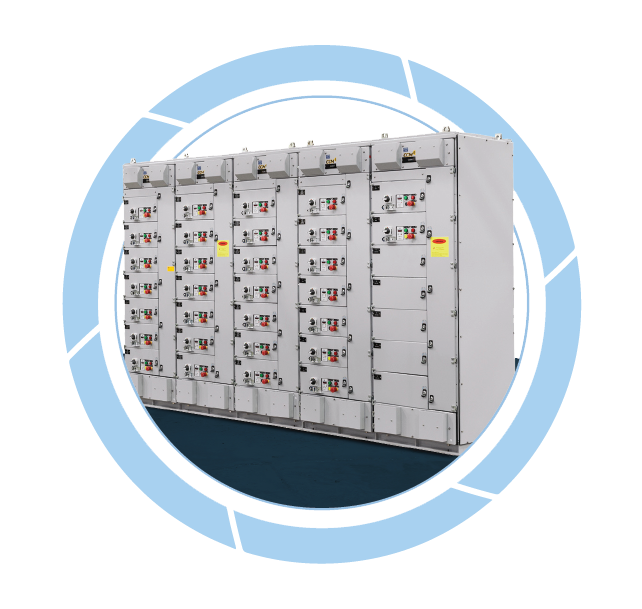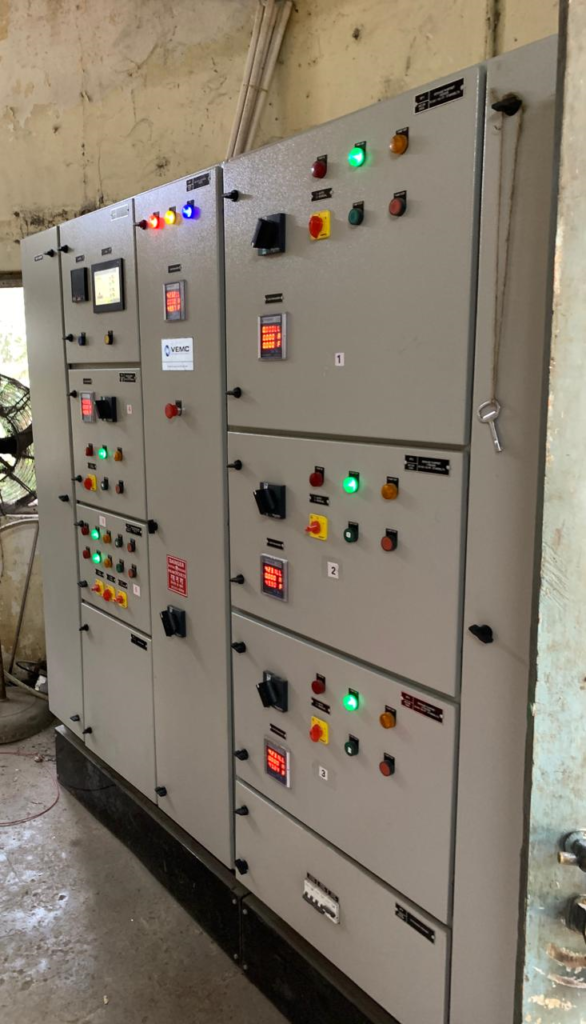A Motor Control Center is an assembly that controls some or all of the electric motors in a central location. It consists of various components like starters, fuses and circuit-breakers. All of these play the corresponding function of starting, controlling and protecting the motors and are assembled in an integrated panel. MCCs are mostly found in large commercial and industrial buildings where these are used to control a large number of widely deployed electric motors in an efficient and easy way.

An MCC panel consists of a Power Circuit, Control Circuit and Protection. The Power Circuit supplies electric power to the motors and the Control Circuit regulates the sequencing of the contactors and also operates the fans in auto or manual mode. Protection mechanisms like the thermal protection circuit in the panel ensure that the motors are protected from overheating and short-circuit. Contactors, overload relays to protect the motor, fuses and a disconnecting switch, used to isolate the motor circuit, are all parts of an elaborate design of an MCC.
There are different types of Motor Control Centers, based on the voltage supplied, the type of operation, and module division.
Based on the voltage supplied:
MCCs can be classified as Low Voltage and Medium Voltage. Low voltage MCCs are used for low voltage three-phase alternating current motors from 230V to less than 1000V. Medium-voltage MCCs on the other hand are used for large motors requiring around 1000V to 15000V.
Based on the type of operation:
- Combination starter motor: This comprises of several main equipment such as Molded Case Circuit Breaker (MCCB), magnetic contactor, over-interference safety relay and control transformer.
- Manual operation: This type of MCC is used to control a motor that has a maximum power of 10 HP. The starter is manually operated through an on-off switch which also acts as a safety device for overload interference.
- Adjustable speed controller: This type of MCC enables the motors to change their speed by changing the voltage frequency on the motor.
Based on module division:
- Fixed type: In this type of MCC, components like the starter, contactor, thermal overload and others are completely integrated with the frame.
- Semi draw out type: In this type of control center, the voltage source section can be separated from the plug-in system so that if there is damage to one module, it can be removed without interfering with the other systems.
- Fully draw out type: In this type of MCC, all the components can be removed in case of damage, and repaired outside the panel without interfering with the function of the other modules.
As one of the top MCC panel manufacturers, we would be happy to assist you in finding the best match based on your requirements. Feel free to get in touch with our experts on +91 98199 07445. One of India’s best solar companies with 72 years of market experience, VEMC provides end-to-end solar EPC services to its clients. VEMC is ISO 9001:2015 certified and is one of the most renowned control panel manufacturers in the market. Being one of the leading custom control panel manufacturers, our valued clients are provided with tailor-made solutions to fit all their needs.



